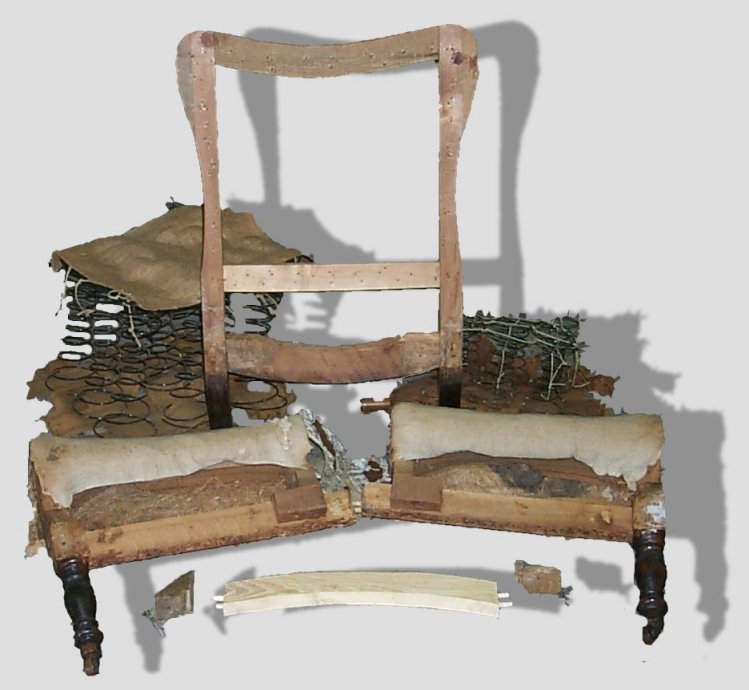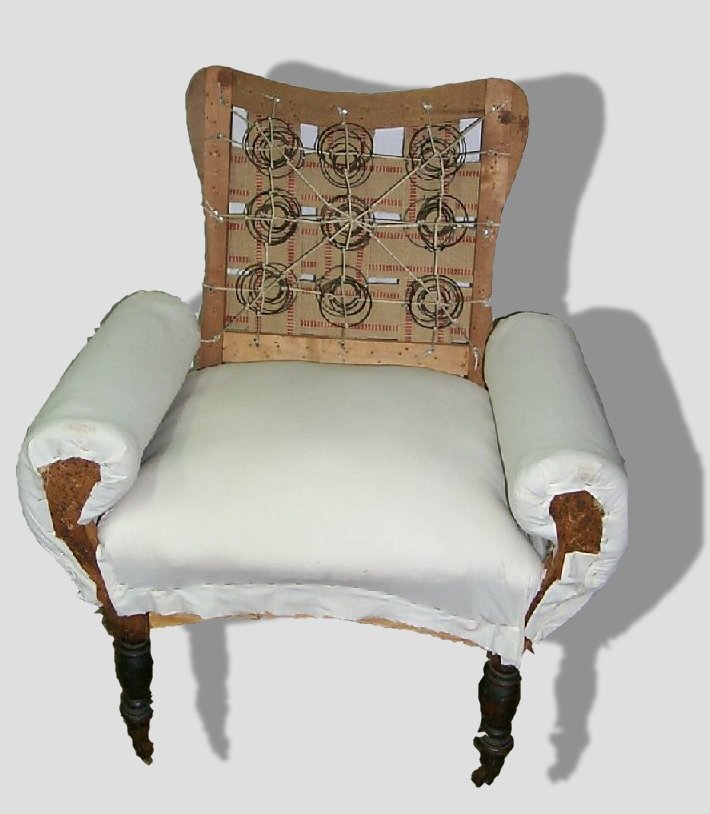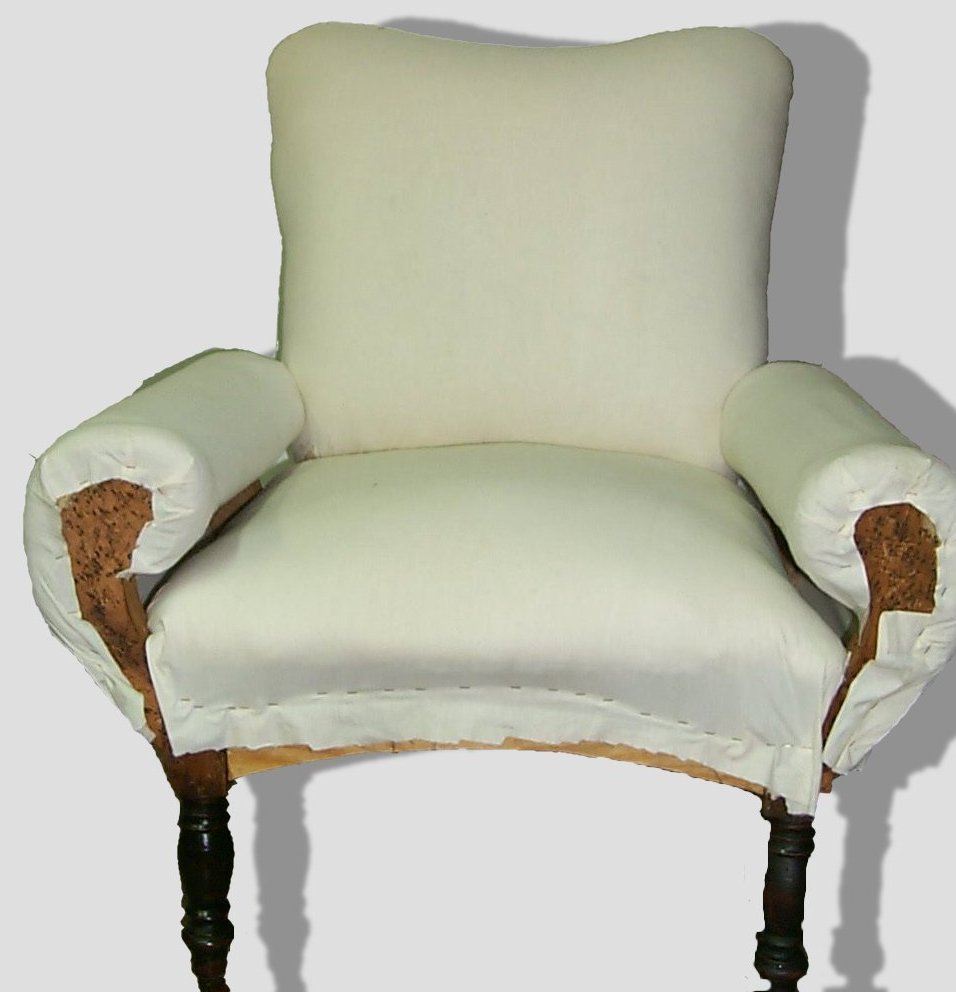USING TRADITIONAL MATERIALS
Civilization has been using fabrics to enhance furniture since backs were added to stools
to create the first chairs. Chairs covered in fabrics were found in tombs of ancient Egypt.
Over time, the art of upholstery has changed and substitutions of materials basic to
durability and comfort have affected the outcome of the final product. At Driscoll
Antiques, we adhere to the proven techniques of upholsters from the the 18th and 19th
centuries, the height of quality furniture making. Included in these techniques are the
use of hand tied spring coils, cambric and muslin linings, jute strapping and horsehair,
moss or straw where appropriate. These components are essential to maintaining
quality and authenticity.
The fabric selection at Driscoll Antiques includes a large collection of domestic and
imported tapestries and velvets. Damasks are available by special order. We have
sources for leather in many colors.
All of these things add to the uniqueness of our upholstery business. |






